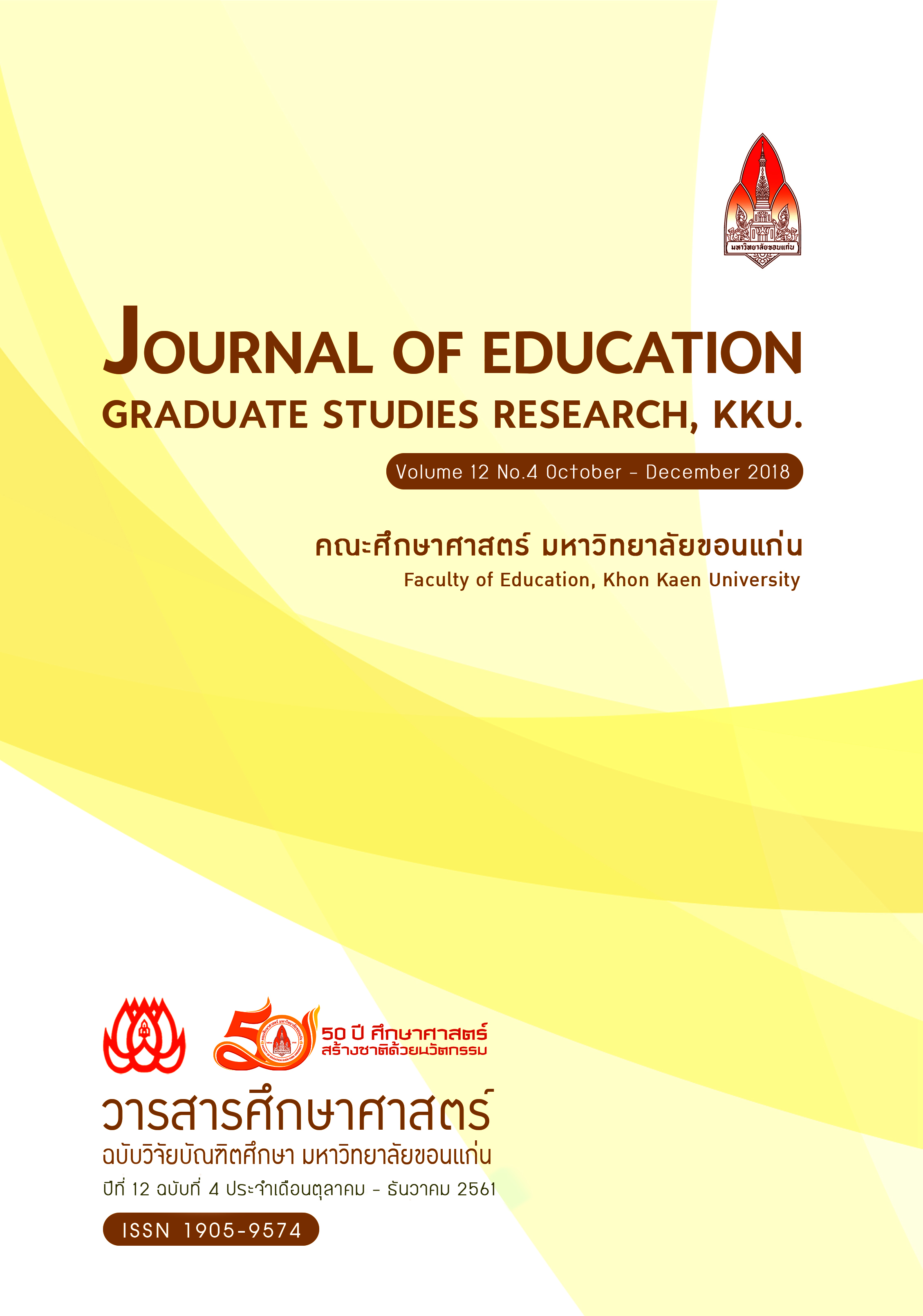The Result of Art Learning Activities About Painting Using Creative Thinking Teaching Model for 2th Grade Student
Main Article Content
Abstract
The objectives of this research were to Study the results of student art activities and study the creativity of the students to earn an average score of at least 70 percent and at least 70 percent of them could pass the criteria, to study satisfaction towards learning activities using Creative Thinking Teaching Model. The target group was 16 of 2nd grade in Banwernprabath School. Research instrument included; 10 lesson plans using the Creative Thinking Teaching Model, test the creativities using Torrance Test of Creative Thinking form A, Satisfaction questionnaire for students.
Research findings were as follows: The art learning activities using the Creative Thinking Teaching Model involved the steps of learning activity management which emphasizing students to joins various activities. Students are drawn to the idea of marketing, potential. Have the audacity and listening to the opinions of others. The Result of Art Learning Activities about painting using the Creative Thinking Teaching Model for 2nd Grade Student. Learning achievement of Students have an average score of 7.58 of 10 as a percentage of the full score of 75.80 and 16 Students of 16 person or 100% could pass the criteria. The Result of test the creativities using Torrance Test of Creative Thinking form A have an average score of 14 of 20 or 70% and 11 students of 16 or 68.75% does not conform to defined criteria. The level of creativity of students; Originality, Fluency, Flexibility, Elaboration might be located at a high level. Satisfaction of student towards learning activities using Creative Thinking Teaching Model was at a highest level for 4 aspects including role of a teacher, role of a student, role of content and role of activity.
Article Details
References
แคทลียา ปักโคทานัง. (2557). ผลการจัดกิจกรรมการเรียนรู้ศิลปะ โดยใช้การสอนที่ส่งเสริมความคิดสร้างสรรค์ สำหรับนักเรียนชั้น มัธยมศึกษาปีที่ 1. วิทยานิพนธ์ศึกษาศาสตรมหาบัณฑิต สาขาวิชาหลักสูตรและการสอน
บัณฑิตวิทยาลัย มหาวิทยาลัยขอนแก่น.
จำเนียร ช่วงโชติ. (2532 ). ความแตกต่างระหว่างบุคคล. ค้นเมื่อ 25 มีนาคม พ.ศ. 2560,https://nuttapong.wikispaces.com.
นิตยา วงศ์ชู.(2555). กาพัฒนาความคิดสร้างสรรค์ทางศิลปะ เรื่องการวาดภาพระบายสี ชั้นประถมศึกษาปีที่ 5 โดยการจัดการเรียนรู้ แบบส่งเสริมความคิดสร้างสรรค์. วิทยานิพนธ์ศึกษาศาสตรมหาบัณฑิต สาขาวิชาหลักสูตรและการสอน บัณฑิตวิทยาลัย มหาวิทยาลัยขอนแก่น.
วิชัย วงศ์ใหญ่. (2542). พลังเรียนรู้ในกระบวนทัศน์ใหม่. กรุงเทพฯ: คณะศึกษาศาสตร์ มหาวิทยาลัยศรีนครินทรวิโรฒ.
ศิริพงษ์ เพียศิริ. (2551). การพัฒนาหลักสูตรฝึกอบรมสำหรับนักศึกษาปริญญาบัณฑิตด้วยกิจกรรม ศิลปะเพื่อพัฒนาความคิดสร้างสรรค์และทักษะการผลิตผลงาน.วารสารศึกษาศาสตร์, 1(1), 20-26.
สำนักงานเลขาธิการสภาการศึกษา กระทรวงศึกษาธิการ. (2550). แนวการจัดกิจกรรมการเรียนรู้แบบส่งเสริมความคิดสร้างสรรค์. กรุงเทพฯ: กลุ่มส่งเสริมนวัตกรรมการเรียนรู้ของครูและบุคลากรทางการศึกษา สำนักมาตรฐานการศึกษาและพัฒนาการเรียนรู้.
Guilforde J. P. (1967). The nature Intelligence. New York: McGrew-Hill Book.
Torrance, E. P. (1962). Guiding creative talent. New York: Prentice Hill.

